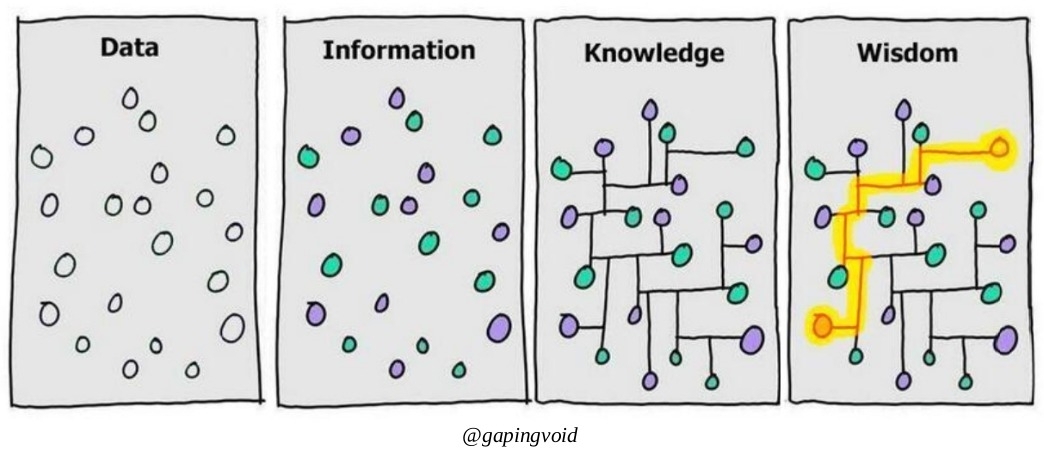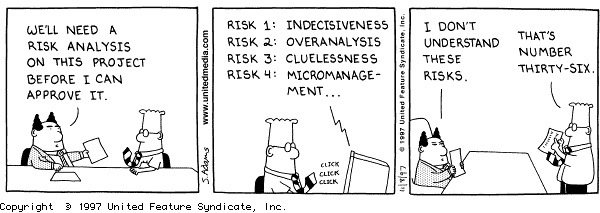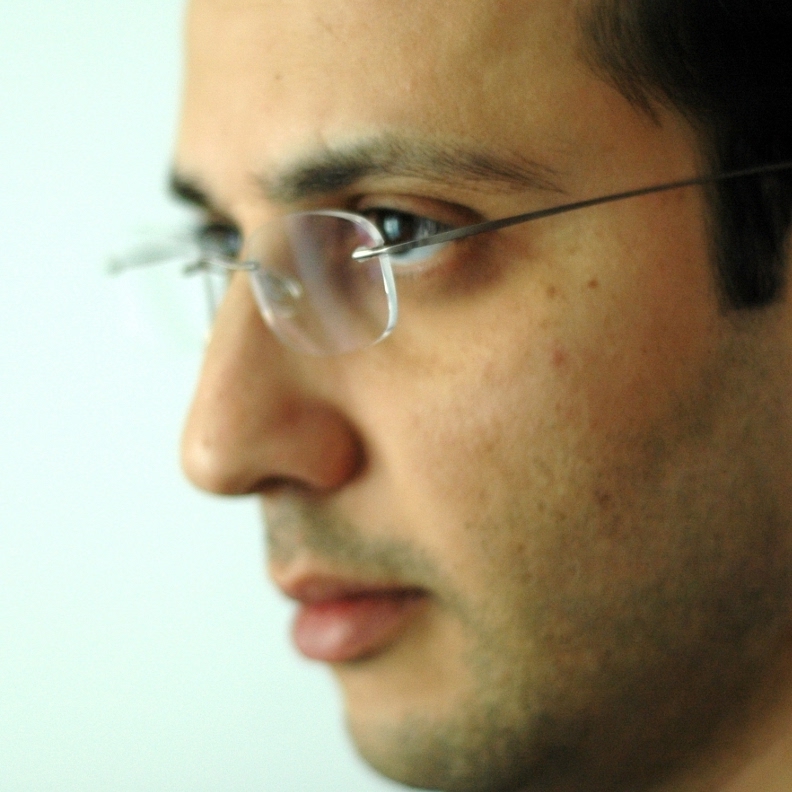From Specialist to Polyglot: An Architect’s Journey
In a world where specialization is often hailed as the pinnacle of success, I find myself cheerfully perched atop the hill of ambiguity, happily wearing the badge of a “polyglot” in the tech cosmos.
This term, I’ve grown quite attached to it over the years, It’s morphed from its linguistic origins to become, synonymous with an approach that values versatility over specificity.
Yes, I’m the Architect who dances between the raindrops of technology stacks, merging them into a harmonious symphony.
Today, I’m here to share some thoughts about the unique and somewhat underappreciated role of a polyglot architect.
Embracing Versatility: A Polyglot’s Journey
“An architect knows something about everything. An engineer knows everything about one thing.” – Matthew Frederick
Now, don’t get me wrong; I have immense respect for those engineers who dive headfirst into the deep, dark abyss of a single technology, tirelessly perfecting their craft. They’re the virtuosos of their chosen domain, while I, on the other hand, am more of a tech orchestra conductor , orchestrating the disparate melodies of various technologies into a harmonious ensemble.
The Versatile Diplomat: Polyglots as Federators
The first thing to understand about a polyglot is that we don’t specialize; we specialize in not specializing.
We embrace the diversity of the tech world, as it’s our playground. We switch between programming languages, paradigms, patterns, tools, cloud providers and even sectors like it’s a game of musical chairs. And we’re not just limited to one sector - we’ll dabble in anything that catches our fancy.
In the ever-changing landscape of technology, we are the chameleons, effortlessly adapting to the colors of our surroundings. And no, we don’t suffer from a severe case of FOMO (Fear of Missing Out); but we are incurably MOMO (Mystery of Missing Out) as we are
committed with continuous doubt to choose the right tool design for the right job purpose.
It took me a while to realize that I’m not an expert - I’m a federator.
I’m not the one who digs deep into the intricacies of a particular technology; I’m the one who brings together experts from various disciplines.
I’m the diplomat, negotiating peace between the warring factions of different departments and technologies.

It’s not about me having all the answers; it’s about knowing where to find those answers.
The polyglot architect’s expertise lies in connecting the dots, understanding the bigger picture, and translating it wisely into a coherent tech strategy.
The Maestro of Global Coherence: Polyglots and Their Value
The value I bring to the table isn’t confined to the detailed technical implementation. It’s about the grand tapestry I weave, ensuring that every thread is in its rightful place.
A polyglot Archiect is the guardian of global coherence. He makes sure that the chosen technologies align with the overarching business goals, that the product roadmap is a reflection of the company’s vision, and that every aspect of the process is fine-tuned for maximum efficiency.
In essence, He is the bridge that links technology with the business, aligning them for mutual benefit.
But what truly defines my role as a polyglot architect is the impact I have on the overall product, process, quality, and people.
A polyglot Architect is the one who ensures that the product doesn’t just work; it thrives.
I usually scrutinize the development process to minimize bottlenecks and maximize productivity. Furthermore, I’m the relentless guardian of quality, standing at the gates with a sharp sword to fend off the regressions and performance issues.
A polyglot Architect doesn’t just manage code; He manages also people, inspiring and guiding them to reach their full potential.
Unleashing the Power of Creativity
One of the secret ingredients that fuel the success of a polyglot architect is his creativity.
“The limits of my language are the limits of my word” – Ludwig Wittgenstein
In the ever-evolving tech landscape, creativity is our magic wand. It’s the spark that ignites innovative solutions to complex problems.
By having a broad view of various technologies and patterns, we can draw inspiration from one domain and apply it to another, leading to groundbreaking ideas and solutions.
For example, use Machine Learning to insure, scale and assess the Data Quality when feeding a Data Lake. This creative blending of ideas and experiences is what sets polyglot architects apart. We’re the alchemists of technology, turning the mundane into the extraordinary.
Understanding All the Parties
Being a polyglot architect goes beyond just understanding technology; it involves grasping the perspectives of all the involved parties. We serve as the middlemen who connect technical teams, business stakeholders, and end-users. This requires us to be adept not only in the language of code but also in the various communication styles of project managers, marketers, executives, and customers.
“The polyglot is a linguistic nomad.” — Rosi Braidotti
Having insights into the business aspect is crucial for aligning technology with strategic objectives. It entails translating technical jargon into terms that resonate with decision-makers in boardrooms. It’s about ensuring that every technological decision contributes towards advancing business goals.
On the flip side, empathizing with end-users is equally important. We need to understand their requirements, preferences, and challenges. After all, technology should enrich human experiences, and it falls on us to ensure that our architectural solutions are user-focused and bring tangible benefits.
Furthermore, comprehending the internal workings of a team is vital. We are not just mediators among tech experts; we are also leaders who promote collaboration, resolve disputes, and empower individuals to unleash their full potential. Our capability to navigate team dynamics intricacies effectively communicate and offer clear guidance can be the linchpin for project success.
Superpower : a Tech Lobbyist
Now, let’s talk about a one of many superpower that a Polyglot Architect possesses: unblock complex of challenges.
It’s the ability to take the
[architect] elevator
, metaphorically speaking, and seamlessly navigate through all levels of a business challenge.
We’re not just architects of technology; we’re also influencers of decisions.
Imagine being able to lobby from the bottom, understanding the nitty-gritty details, and then effortlessly switching gears to advocate from above, aligning with high-level strategic goals.
This duality is one of our secret weapons, a skill that allows us to bridge the gap between technical intricacies and the broader business landscape, ultimately driving effective solutions and ensuring that every decision serves a purpose.
As a Polyglot Architect, our impact extends to guiding and shaping the every decisions that steer the course of a project or an organization.
Navigating the Risks in the Realm of Polyglot Architecture
While the role of a Polyglot Architect is undoubtedly rewarding, it’s not without its set of risks and challenges.

First and foremost, the fear of being too general often looms in the background.
However, it’s essential to clarify that being versatile doesn’t equate to being superficial.
The risk lies in striking the right balance between breadth and depth. It’s a tightrope walk where one must possess enough knowledge in various domains without sacrificing the depth of understanding.
Also, it’s Herculean task to stay update-to-date in the ever-evolving tech landscape. The risk of knowledge obsolescence is ever-present, and keeping pace with the rapid changes in the field is a constant battle.
Moreover, complexity in communication is another challenge.
With various domains, technologies, and jargon in play, conveying complex ideas to diverse stakeholders can be a daunting task.
Becoming a Polyglot Architect
Now, you might be wondering how one can overcome those risks and embark on the journey of becoming a polyglot architect.
Here are some key steps to consider:
1. Touch as Many Technologies as Possible
The first rule is to touch as many technologies as possible. Don’t limit yourself to a single stack, language or public cloud provider. Explore different kind of languages, development frameworks & methodologies, databases & data science, tools and patterns.
The broader your exposure, the more versatile your expertise becomes.
2. Accelerate Your Learning Curve
To keep up with the rapidly evolving tech landscape, you must accelerate your learning curve. Expand your knowledge quickly by learning to assess quickly the fundamentals and putting them in action. Without forgetting the ask for help or follow online courses.
3. Dive into the Concepts, Patterns, and Domains
To become a polyglot, dive deep into the core concepts, the variaty of design patterns, and technology domains. Understand the commonalities and differences between various topics, technologies, just get to the heart of what makes them tick.
4. Sharpen Your Thinking
Develop critical and strategic thinking skills. Being able to analyze problems, evaluate trade-offs, and make informed decisions is crucial for a polyglot architect. Consider pursuing courses in critical thinking and systems thinking to enhance your abilities.
5. Work on Your Soft Skills
The journey to becoming a polyglot architect is not just about technical know-how only. Soft skills like communication, leadership, and negotiation are equally important for such an adventure.
Seek to hone these skills, as they will be instrumental in your role as a tech diplomat and federator.
5. Build Your Own Opinion
While it’s essential to learn from others, don’t forget to build your own opinions. Experiment with different topics and form your judgments based on your experiences.
Your unique perspective is a valuable asset in the ever-evolving tech world.
Final thoughts
In a world where specialization often reigns supreme, the polyglot architect stands as a beacon of versatility and adaptability. By mastering the art of touching multiple technologies, accelerating learning, delving into fundamentals and patterns, fostering critical and strategic thinking, building independent opinions, refining soft skills, and understanding all the parties involved, anyone can embark on the journey of becoming a polyglot.
This unique role is not just about being a tech expert; it’s about orchestrating the symphony of technology, connecting the dots, and ensuring the harmony of the whole.
So, the next time you encounter a polyglot architect, remember that they are not just jacks of all trades and masters of none; they are the architects of coherence, the federators of the tech world, and the champions of global harmony.

